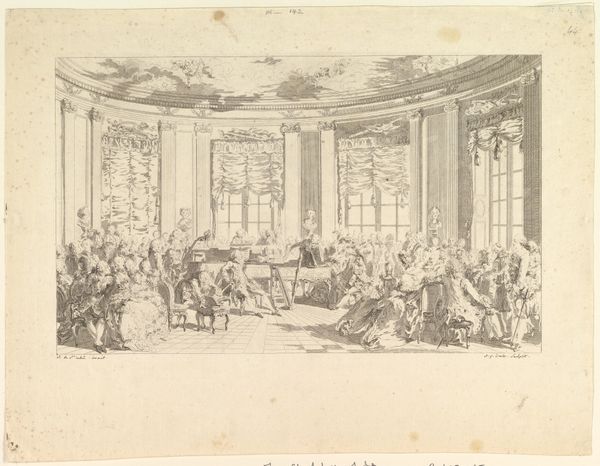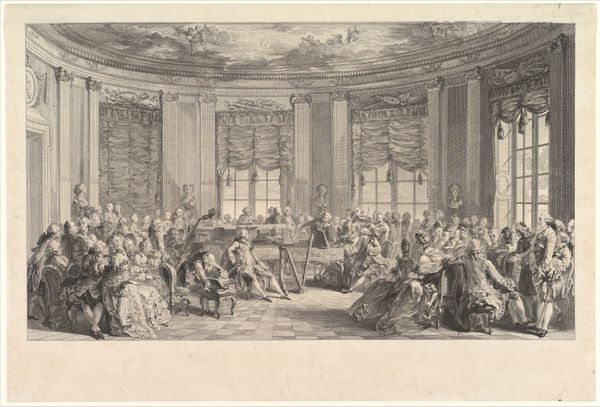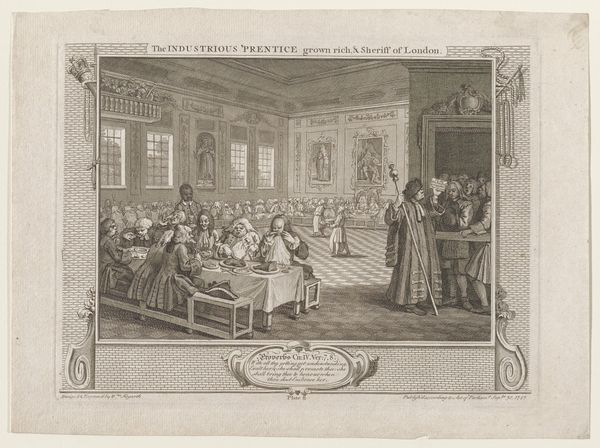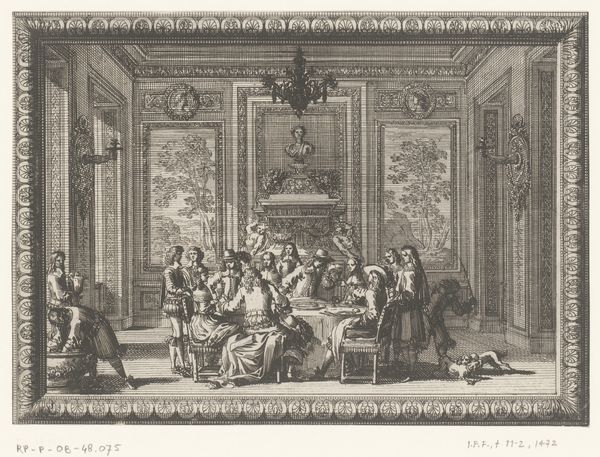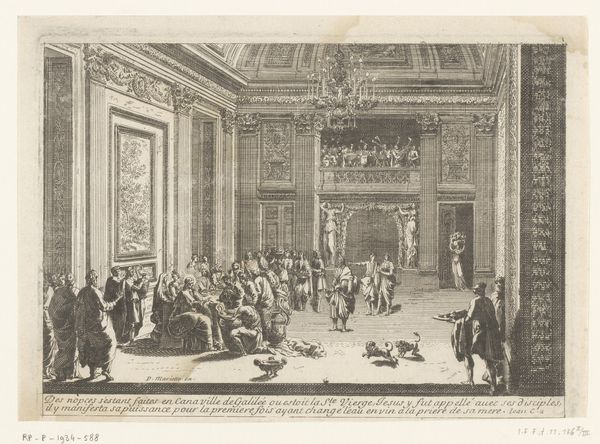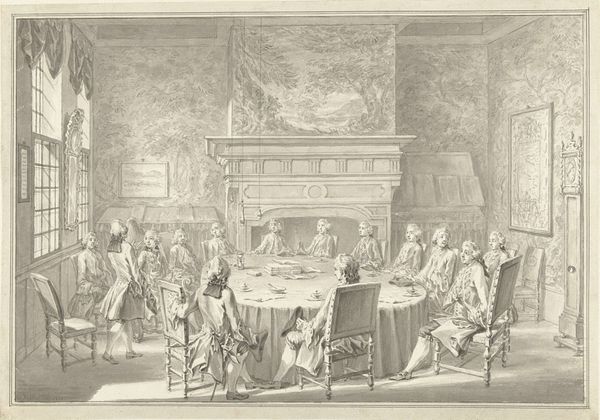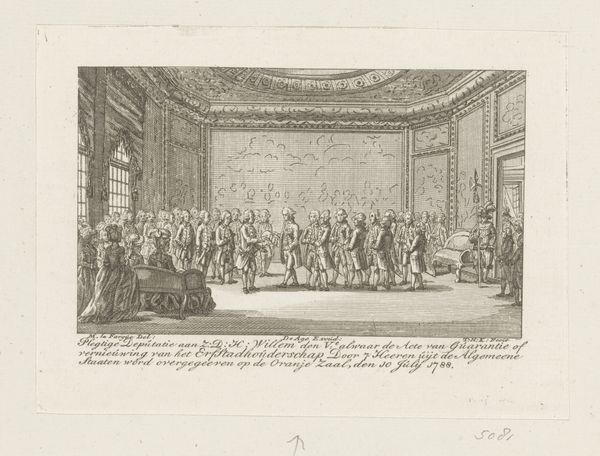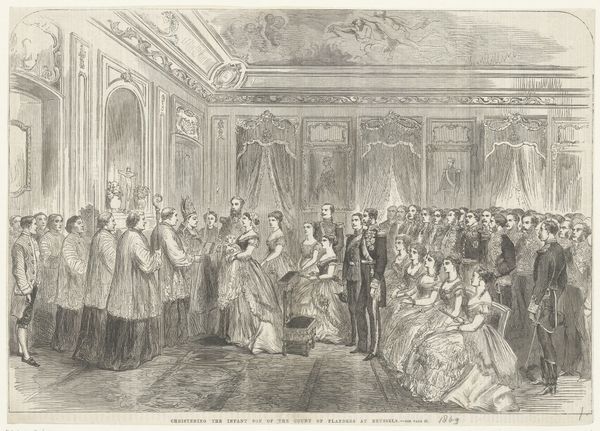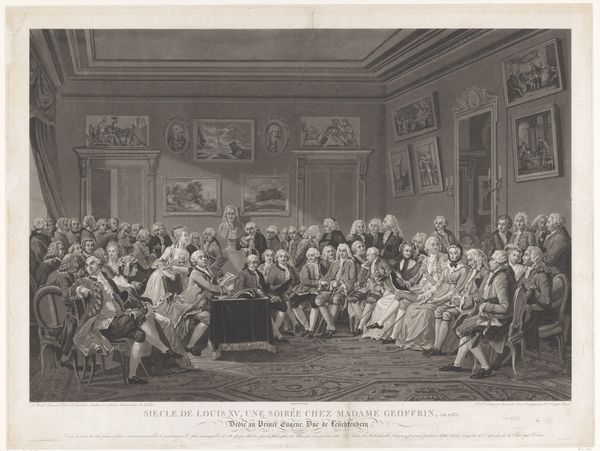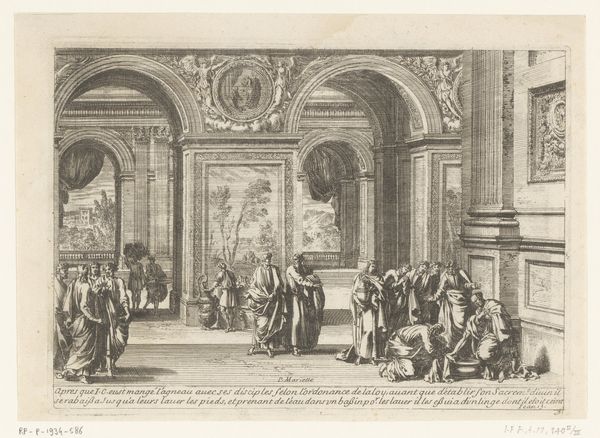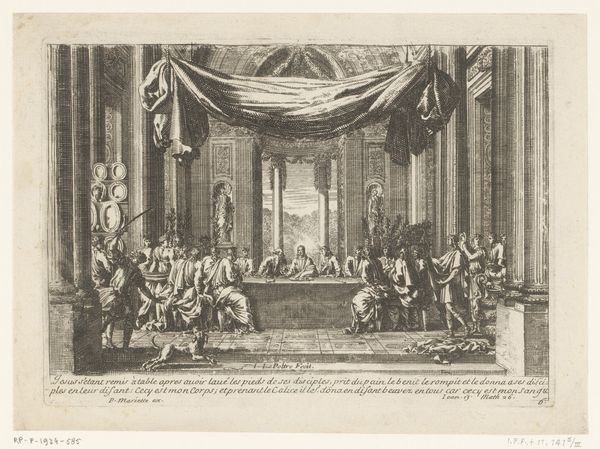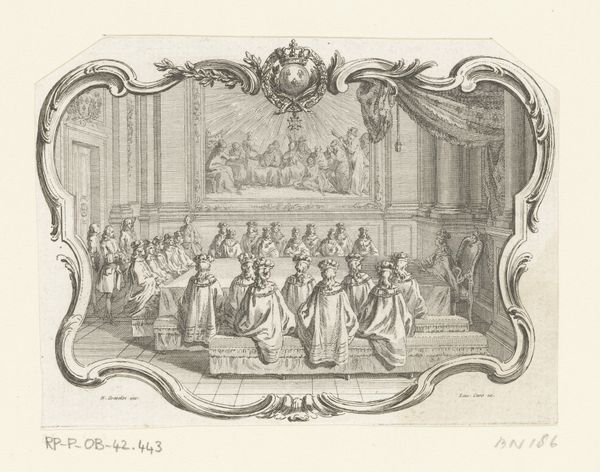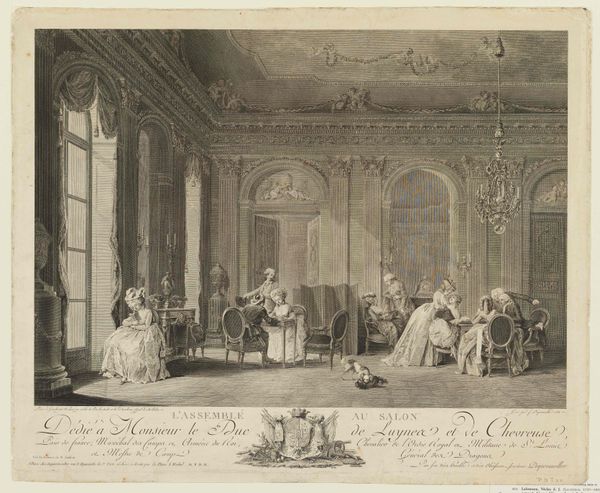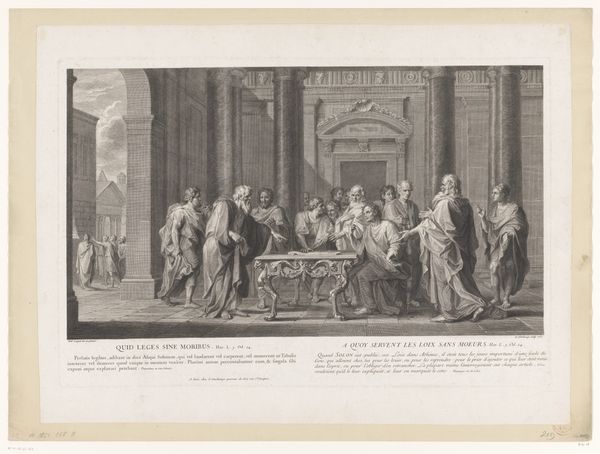
Dimensions: Sheet: 13 9/16 × 17 13/16 in. (34.4 × 45.3 cm) Plate: 12 5/8 × 16 15/16 in. (32 × 43 cm)
Copyright: Public Domain
Editor: This is "Le Concert" by Antoine Jean Duclos, created in 1774. It's currently held at the Metropolitan Museum of Art, and it’s an engraving. The level of detail is impressive. I'm curious, what strikes you about it? Curator: Well, let's consider the engraving process itself. It's not just about replicating an image; it’s a labor-intensive process involving metal, tools, and the skilled hands of the engraver. Duclos is making a clear intervention. How does this process shape the visual language and ultimately influence its consumption? Editor: That’s interesting. I hadn’t considered the labor involved. Curator: Look at the staging of the concert within this opulent interior. Notice the relationship between the performers and the audience. Are they merely passive recipients of this music or active participants in a social ritual, made possible through labor? And how does the print medium facilitate wider access to this depiction of elite culture? Editor: I see what you mean. The engraving allows this scene of luxury to be reproduced and circulated. It almost feels like a form of early media, documenting the consumption habits of the wealthy. Is there anything more that engraving adds? Curator: It transforms painting into mass media: the means of its own reproduction and distribution is the subject itself. That elaborate ornamentation on the frame – its pattern of lines and shapes could almost be a visual equivalent of Baroque musicality itself! Consider, too, the ways in which the clothing signals class and status and production methods – the texture of the fabric through intricate, labourious engraving lines. This makes one contemplate both the system of value inherent to the culture represented within and the processes necessary to make the artwork itself. Editor: That gives me a lot to think about in terms of accessibility, not just to the image but to the ideas it embodies! Curator: Indeed! It helps us think about the material conditions that shape both the artwork and its reception.
Comments
No comments
Be the first to comment and join the conversation on the ultimate creative platform.
